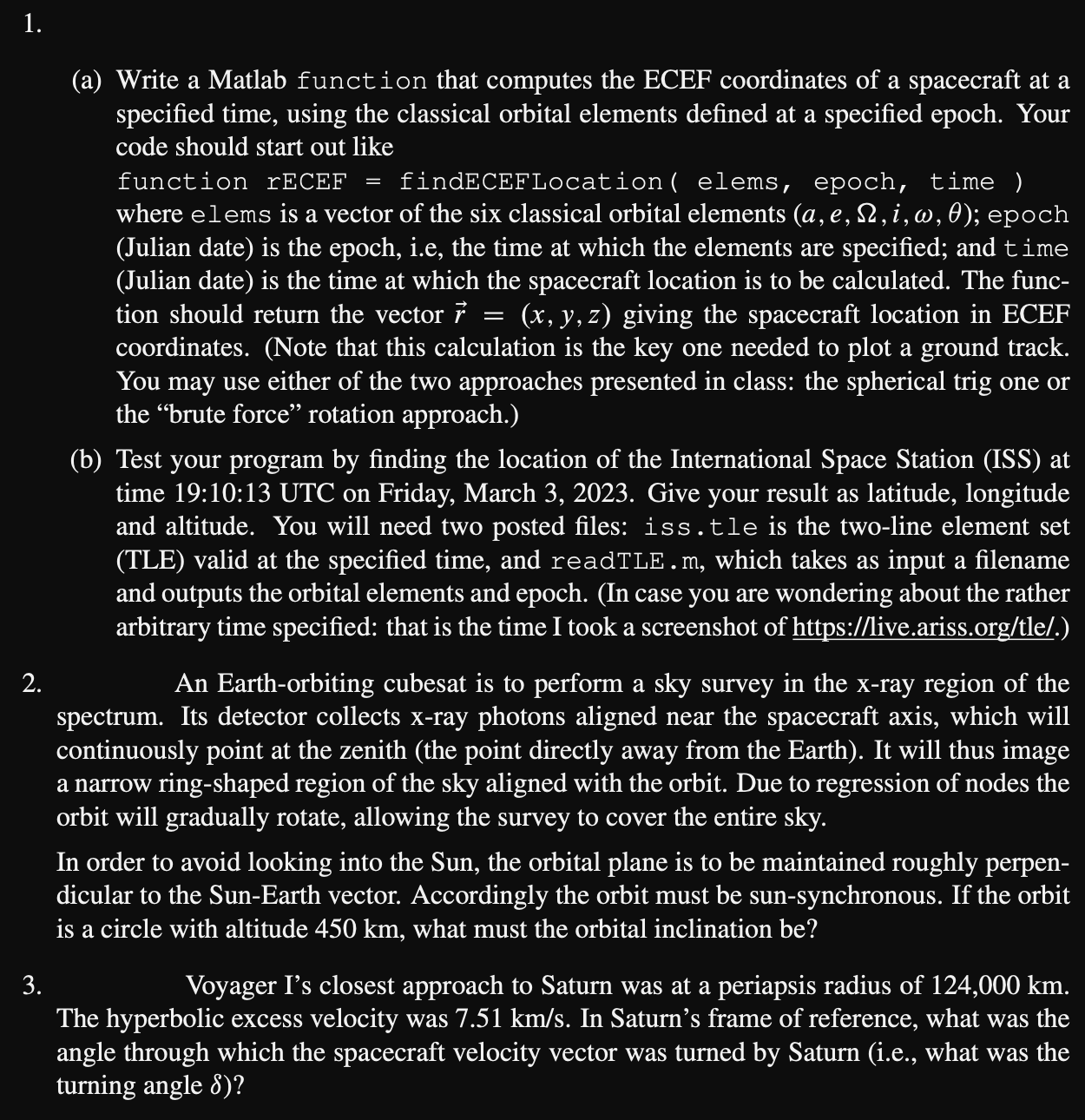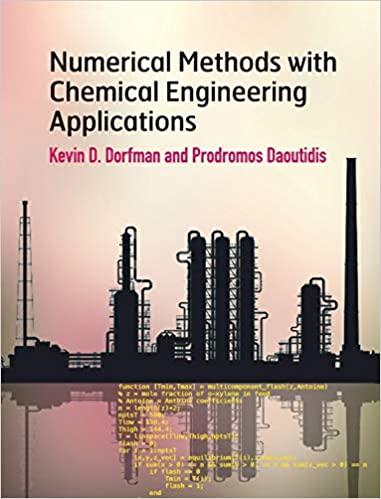Answered step by step
Verified Expert Solution
Question
1 Approved Answer
1. 2. 3. (a) Write a Matlab function that computes the ECEF coordinates of a spacecraft at a specified time, using the classical orbital

1. 2. 3. (a) Write a Matlab function that computes the ECEF coordinates of a spacecraft at a specified time, using the classical orbital elements defined at a specified epoch. Your code should start out like function rECEF = findECEFLocation( elems, epoch, time ) where elems is a vector of the six classical orbital elements (a, e, ,i,w, 0); epoch (Julian date) is the epoch, i.e, the time at which the elements are specified; and time (Julian date) is the time at which the spacecraft location is to be calculated. The func- tion should return the vector (x, y, z) giving the spacecraft location in ECEF coordinates. (Note that this calculation is the key one needed to plot a ground track. You may use either of the two approaches presented in class: the spherical trig one or the "brute force" rotation approach.) = (b) Test your program by finding the location of the International Space Station (ISS) at time 19:10:13 UTC on Friday, March 3, 2023. Give your result as latitude, longitude and altitude. You will need two posted files: iss.tle is the two-line element set (TLE) valid at the specified time, and readTLE.m, which takes as input a filename and outputs the orbital elements and epoch. (In case you are wondering about the rather arbitrary time specified: that is the time I took a screenshot of https://live.ariss.org/tle/.) An Earth-orbiting cubesat is to perform a sky survey in the x-ray region of the spectrum. Its detector collects x-ray photons aligned near the spacecraft axis, which will continuously point at the zenith (the point directly away from the Earth). It will thus image a narrow ring-shaped region of the sky aligned with the orbit. Due to regression of nodes the orbit will gradually rotate, allowing the survey to cover the entire sky. In order to avoid looking into the Sun, the orbital plane is to be maintained roughly perpen- dicular to the Sun-Earth vector. Accordingly the orbit must be sun-synchronous. If the orbit is a circle with altitude 450 km, what must the orbital inclination be? Voyager I's closest approach to Saturn was at a periapsis radius of 124,000 km. The hyperbolic excess velocity was 7.51 km/s. In Saturn's frame of reference, what was the angle through which the spacecraft velocity vector was turned by Saturn (i.e., what was the turning angle 8)?
Step by Step Solution
There are 3 Steps involved in it
Step: 1

Get Instant Access to Expert-Tailored Solutions
See step-by-step solutions with expert insights and AI powered tools for academic success
Step: 2

Step: 3

Ace Your Homework with AI
Get the answers you need in no time with our AI-driven, step-by-step assistance
Get Started


